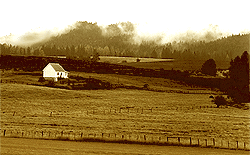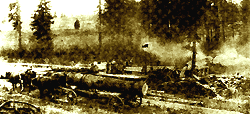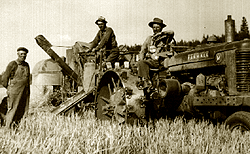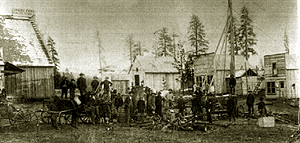|
|
|
|
|
|
|
|
|
|

 |
|
|
|
|
|
|
|
|
|
|
|
|
|
|
|
|
|
|
|
|
 A little bit of Avon history.
A little bit of Avon history.
Like the majority of small western towns, history of Avon reflects man's troubled relationship with the environment.
In the second half of the 19th century and a good part of the first half of the 20th century, the small western communities,
organized around natural resources, timber, mining, soil, water, were forced to ride the bust and boom effects of the economic cyclic waves.
Timber companies together with the railroads played a significant role in Avon's history.
| ||
| ||

Around 1910 Richard Wilkins built a store and soon other structures followed: post office, church, two other stores (apart of which was used a school), a service station, Grange Hall. But it was the town of Deary which benefited more than Avon from the extensive logging operations by expanding Potlach Company. | ||

Today there are very few buildings standing on the original location of the town, the "field of grass has taken the site of Avon", the buffalos at Johnson's Bear Creek Ranch roam the rolling terrain, and the sounds of threshing machines are only a distant memory. | ||
Avon history as told to Harry Schwartz by Jack Davis
The town of Avon lies about twenty-seven miles east of Moscow, Idaho. On modern maps, Avon is now depicted as a ghost town, though the area remains populated. Anyone who has visited such a town is familiar with the special feeling of viewing old buildings and machinery. It is an overwhelming experience to stand in waist high in grass on the outskirts of Avon trying to imaging the men and women who once worked and lived here. In 1884, James Harvey Lunsford and H.L. Hawkins loaded their pack saddles and mounted their horses. They rode from Meade, Washington into North-Central Idaho following the terrain of the countryside. Eventually they happened upon meadows surrounded by densely wooded forests. James Lundsford liked the area and he set set up his homestead here, under the Homestead Act of 1862. The Act afforded 40 acres land per person. If a dweling was built, imp[rovements made, some land cleared and then maintained for at least five years, the U.S. Government would award a deed to the settler.
The town of Deary, five miles away, was already expanding when James Lunsford and a few others
began planting the town of Old Avon. Though the Axtell family was also in the area, Lunsford set the stage
for old Avon to begin growing. Buildings were rapidly constructed. Two stores, two salons,
a clothing store, livery stable, blacksmith a dancehall, school, and a church were built.
| ||
 This farmhouse was built by Peter A. Lundgren in 1905 on his homestead. |





 The work of clearing land in Avon was a true frontier chore. Because the soil was poorer than that found
in the Palouse region and the seasons shorter, hay was usually grown in the cleared areas and cattle ranching
became a way of life. Also, logging camps and sawmills sprang up to handle the rich supply of lumber.
The work of clearing land in Avon was a true frontier chore. Because the soil was poorer than that found
in the Palouse region and the seasons shorter, hay was usually grown in the cleared areas and cattle ranching
became a way of life. Also, logging camps and sawmills sprang up to handle the rich supply of lumber.